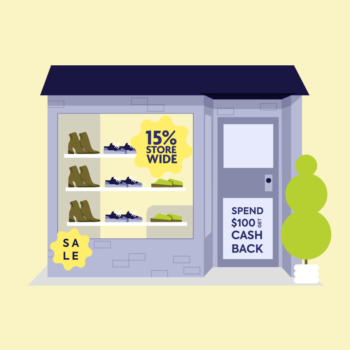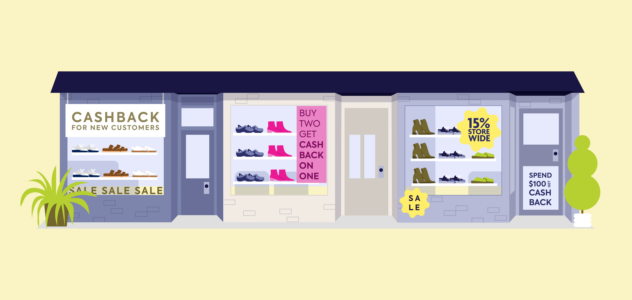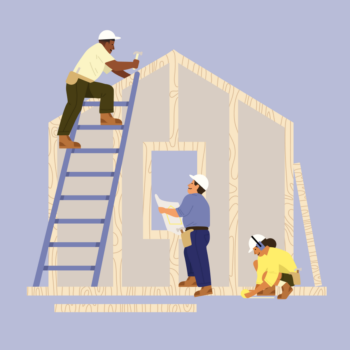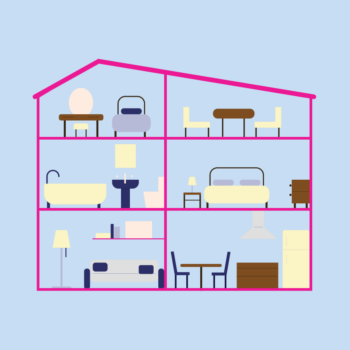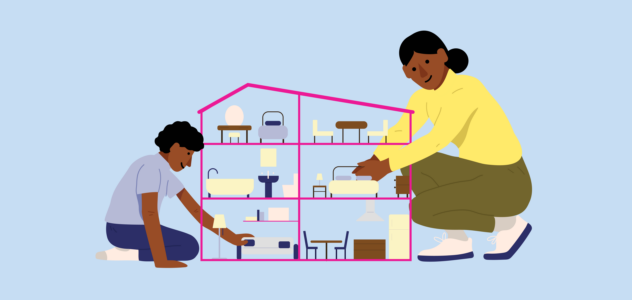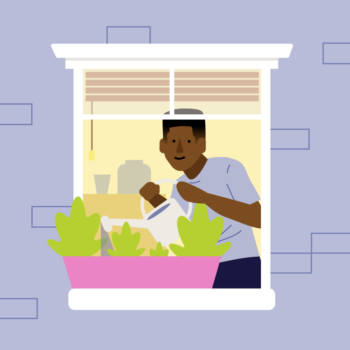Good news. There may be a way out for ‘mortgage prisoners’ – AKA Aussie homeowners who are stuck with a particular lender at a higher interest rate because they don’t meet the requirements to refinance.
Yep – many lenders are recognising the struggle of rising interest rates over the past couple of years and adapting their lending criteria accordingly – which may ultimately make it easier for homeowners to jump ship.
In a nutshell, a lot of lenders have lowered the ‘serviceability buffer’ they add to provide comfort that a borrower could continue to afford the loan if interest rates increase. They’ve basically said, “you know what, rates are no longer super low, perhaps we don’t need as much of a buffer for some customers.”
A win for the little guys!
But wait, what is a mortgage prisoner?
Being a ‘mortgage prisoner’ is about as fun as it sounds.
It’s when a borrower becomes locked into their existing lender on an interest rate that’s higher than the current available market rates. Yep, they become ‘stuck’ in their mortgage and unable to refinance (switch lenders) because – for various reasons – they don’t meet the criteria for another lender to take them on board.
It goes a little something like this…
Homeowner: “Hey, this rate’s a little high compared to the rest of the market, I want to refinance”
Lenders: “Oh no, you can’t possibly afford this new rate by our calculations.”
Narrator: Homeowner was left confused as the new rate is lower than the one they’re currently on (and they’re currently making all their repayments without any problems).
Sounds kinda illogical, right? So why are ‘mortgage prisoners’ a thing?!
It’s often due to serviceability (AKA the ability to afford the loan repayments) and the interest rate ‘buffer’ lenders add to provide comfort that a borrower could continue to afford the loan if interest rates increase. Up until recently, many lenders would add a minimum 3% serviceability buffer to the rate they offer a borrower. This basically says, if rates were to increase by 3% would you still be able to pay back the loan?
This buffer is important, as it allows for unexpected changes, like rate rises, inflation or a change in jobs.
Buuuut because of rising rates, many homeowners are deemed unable to ‘meet repayments’ by lenders after they’ve added that serviceability buffer (even if they’re currently meeting their relatively high repayments).
But the good news? A lot of lenders have recognised this issue and are making some exceptions to their serviceability buffers (more on that in a minute).
How does someone become a mortgage prisoner?
There are many reasons homeowners can find themselves ‘stuck’ and unable to meet a new lender’s serviceability requirements. The most common is a rise in interest rates. Other reasons might be a change in your salary or not enough equity on your property (which in turn, can shift your Loan to Value Ratio).
Why are so many people struggling to refinance?
Probably don’t need to say this one again, but we will. Rising interest rates.
So what even are interest rates? And who decides them?
Interest rates are the price you pay to borrow money from a lender. And it’s ultimately how lenders make their money. The Reserve Bank of Australia (RBA) is Australia’s central bank and the primary decision-maker when it comes to Australia’s monetary policy. And, the RBA sets a thing called the cash rate, which is the benchmark interest rate used for loans between the banks.
When the RBA changes the cash rate, this can often trickle down to mortgage holders. Historically speaking, we often see banks and lenders change their interest rates after an RBA cash rate change.
And recently, we’ve experienced rate hikes by the RBA, largely as an effort to control inflation.
We’ve also seen many homeowners come off fixed rates (AKA the fixed rate fallout).
So now you can see, with these higher interest rates AND the serviceability buffer, many homeowners are struggling to refinance.
But there’s good news amongst it all.
So, what’s changed?
Finally, a lot of lenders have basically said, “you know what, rates are no longer super low, perhaps we don’t need as much of a buffer for some customers.”
As a result, we’ve seen lenders cut the 3.00% serviceability buffer to as little as 1.00% – recognising this may be more appropriate in *some* circumstances in the current climate.
Lenders currently offering mortgages with a lower serviceability buffer include CommBank, NAB, Westpac and its sub-brands (Bank of Melbourne, St George Bank and BankSA).
This will see many previously ‘trapped’ homeowners able to refinance. Booyah!
What’s the eligibility criteria to get the lower serviceability buffer?
There’s a catch. Lenders aren’t throwing around a 1.00% serviceability buffer willy-nilly. Each lender who offers this new 1.00% buffer has their own criteria a homeowner must meet.
While we can’t speak on behalf of all lenders, below are some of the most common eligibility criteria we’re seeing across the market.
- The new loan must be for the same length of time (or longer)
- The new loan is set up with principal AND interest repayments
- You must have had your existing loan for more than 12 months
- Loans must have 80% Loan to Value Ratio (meaning you have more than 20% equity in your home)
- You must have a clean credit history with no evidence of missed payments or defaults
- Lastly, no additional cash out or top up loans are eligible (so the new loan must be the same amount as the current loan)
But if you don’t hit all of these, it’s still worth exploring your options.
Should you refinance in 2024?
Unfortunately, we have to say it again – it depends on your situation.
We can’t give you a simple “yes” or “no”. But we can say this – if you’ve previously been ‘trapped’ in your mortgage, now may be a good time to check if you’re eligible to refinance again.
Want to know more about refinancing? Chat with an expert or jump into these articles.
Ready to chat with a home loan expert?
With Finspo, it’s as easy as 1, 2, 3…
- Book a chat with a friendly Finspo expert (online, phew!)
- Tell us about yourself and provide any additional info
- We’ll do the heavy lifting and present you with some loan options and a recommendation.

